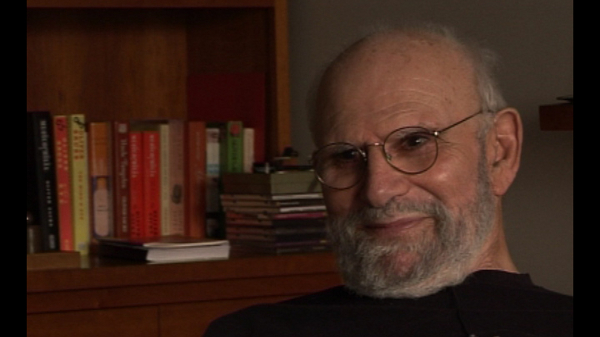NEXT STORY

Colour blindness, Isaacson and achromatopsia in Pingelap
RELATED STORIES

NEXT STORY

Colour blindness, Isaacson and achromatopsia in Pingelap
RELATED STORIES


|
Views | Duration | |
|---|---|---|---|
| 181. The case of the colour-blind painter | 1 | 1035 | 06:38 |
| 182. Ralph Siegel | 339 | 01:31 | |
| 183. Collaboration with Ralph Siegel and Bob Wasserman | 298 | 01:52 | |
| 184. How the colour-blind painter saw the world | 1306 | 01:57 | |
| 185. Colour blindness, Isaacson and achromatopsia in Pingelap | 549 | 06:20 | |
| 186. Ralph Siegel's interesting work | 255 | 02:10 | |
| 187. Isolation, feeling unique and visual neuroscience | 2 | 318 | 05:13 |
| 188. Gerald Edelman's work: reinventions and Neural... | 555 | 05:41 | |
| 189. Gerald Edelman's theory of neural Darwinism | 623 | 01:52 | |
| 190. Where is the individual amongst analogies for the brain? | 407 | 01:57 |


The colour-blind painter – his name was Isaacson – tried to paint in colour. He said, 'I know colour'. There’s a thing called the Pantone colour chart. He could say what colour green, that were 312 on the chart, say a particular chair was in a Van Gogh painting. He thought he could paint by numbers, and he used different tubes of coloured paint or powder or whatever. His artist friends came in and could make no sense of the painting. They really saw a random application of colour. I was interested to take a black-and-white photograph of these chaotic... apparently chaotic canvases, and this showed the form of flowers in black-and-white, so he was portraying the form but getting the colours all wrong. And then he threw out the colours and thought he would only paint in black-and-white, and one special sort of painting he did in black-and-white, he wanted to illustrate what his leaden world was like. And in his studio he... he partitioned off a small room and put in it a table laid for dinner, with food on it, and the walls, the table and everything he did as... in leaden colours. And I retrieved from this, this one artefact which is fruit as he saw it.
Oliver Sacks (1933-2015) was born in England. Having obtained his medical degree at Oxford University, he moved to the USA. There he worked as a consultant neurologist at Beth Abraham Hospital where in 1966, he encountered a group of survivors of the global sleepy sickness of 1916-1927. Sacks treated these patients with the then-experimental drug L-Dopa producing astounding results which he described in his book Awakenings. Further cases of neurological disorders were described by Sacks with exceptional sympathy in another major book entitled The Man Who Mistook His Wife For A Hat which became an instant best seller on its publication in 1985. His other books drew on his rich experiences as a neurologist gleaned over almost five decades of professional practice. Sacks's work was recognized by prestigious institutions which awarded him numerous honours and prizes. These included the Lewis Thomas Prize given by Rockefeller University, which recognizes the scientist as poet. He was an honorary fellow of both the American Academy of Arts and Letters and the American Academy of Arts and Sciences, and held honorary degrees from many universities, including Oxford, the Karolinska Institute, Georgetown, Bard, Gallaudet, Tufts, and the Catholic University of Peru.
Title: How the colour-blind painter saw the world
Listeners: Kate Edgar
Kate Edgar, previously Managing Editor at the Summit Books division of Simon and Schuster, began working with Oliver Sacks in 1983. She has served as editor and researcher on all of his books, and has been closely involved with various films and adaptations based on his work. As friend, assistant, and collaborator, she has accompanied Dr Sacks on many adventures around the world, clinical and otherwise.
Tags: Pantone colour chart
Duration: 1 minute, 57 seconds
Date story recorded: September 2011
Date story went live: 02 October 2012